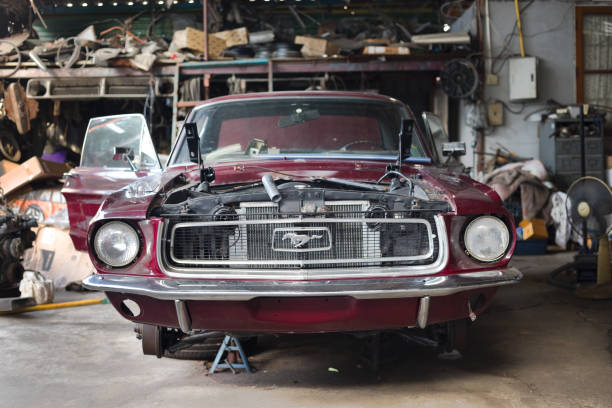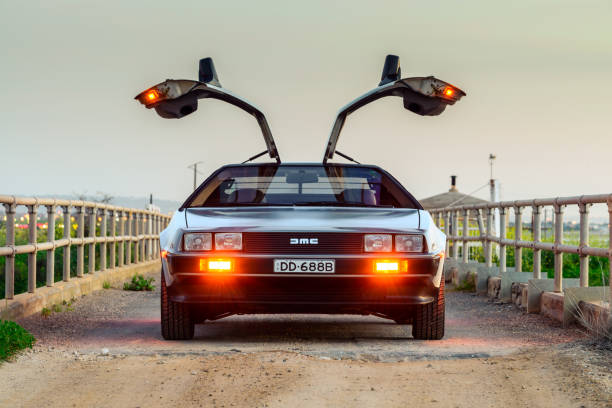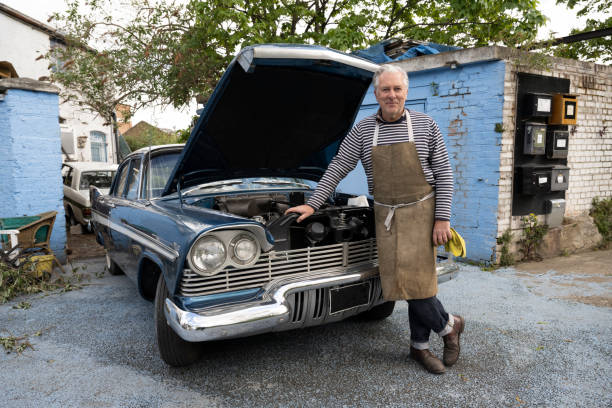There are many reasons people get into restoring and maintaining old cars; however, there are pitfalls for the newbie collector that must be considered or that rustbucket saved from a barn may end up just rotting away in the garage.
According to Hagarty, virtually no one should get into car collecting if they think it is like “flipping houses.” It is not. Just because someone buys a car for $8,000 and spends $30,000 restoring it does not mean the car will be worth $50,000 when all is said and done.
Right now the classic car market is flat, even soft, according to Hagarty. Looking at the graphs, it appears that in 2020, during the pandemic, interest in classic car restoration briefly spiked and then took a nosedive.
Market values on a classic car fluctuate and prices are quoted using the last known auction figures, but those numbers mean very little. The bottom line is that a classic car is only worth what someone will pay for it.
Set your budget and then pick the ride you want to restore, not the other way around.

Restoring and maintaining a Ford Model A and doing the same for a 1963 convertible Lincoln are worlds apart. This is not only because the Model A is basic transportation and the latter is a luxury car. There are simply more things that can break on the Lincoln.
Any car with a convertible top, power antennas or early relay systems are going to cost more to maintain.
Also, in your budget, consider the cost of insurance, tool rentals and the like.
Garage space is important, and it is something most people do not fully consider when taking on a project. Most garages on houses built in the 1970s cannot fit a 1976 Bicentennial Edition Cadillac Eldorado and modern garages seem to be only smaller, making even an engine mount replacement on a 1966 Volkswagen Beetle a chore.
Even if restorers are mechanics themselves, it is always good to have a buddy with access to a lift and tools. When I had my 1977 Pontiac Lemans, if there was something wrong that I couldn’t figure out, then I could just hand off a six-pack of beer to my buddy Rick and he would help me solve the problem.
Car clubs are a great place to start, according to noted car collector Jay Leno. Even the most obscure brands and models have a car club, and these people can be contacted before a project begins to gain insight on recurrent problems with the make or model.
Next, do your homework.
There are some cars that the newbie collector should stay away from unless they are a glutton for punishment.

The automobiles that were released between post World War II and the year 1950 tend to be troublesome as many of the parts used had been sitting around for years before being cobbled together due to the sudden surge of post-war demand.
Most of those vehicles were not only hastily manufactured, but raw materials were still difficult to come by and many automakers had to cut corners to get their cars on the road.
Another rule of thumb is the first and last year of a particular model’s generation are going to be more problematic than inter-year models. The 1964 ½ Ford Mustang is one of the few exceptions, but most first year cars still have kinks that are worked out in later models.
The generation of last-year models can be a pain because, over time, the machines used to “stamp” particular body panels wear out, much like the dies used to produce coins experience wear over time. This causes seams in the body to become uneven and it is something that is a devil to repair, when it is possible at all.
It is always a good idea to research how many recalls the model experienced when first released. Usually a recall will fix whatever problem existed, but it gives the prospective buyer a better understanding of build quality.
Those wishing to get into the hobby should also avoid exotics as a first-time project. While Tactical Fleet states that exotics are one of the few segments that continue to increase in value, they do not address the cost associated with keeping the low-production run cars on the road over time.
It can be particularly difficult to get parts for exotics and using after-market parts or 3-D printed parts can actually decrease the overall value.
So, choose your project carefully and I’ll see you on the road!
Scott Hudson is the Senior Investigative Reporter and Editorial Page Editor for The Augusta Press. Reach him at scott@theaugustapress.com











